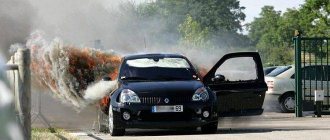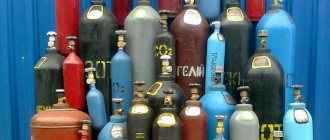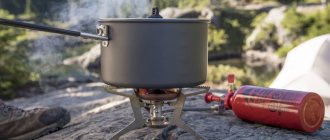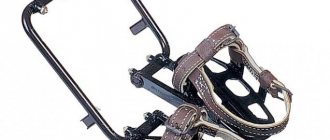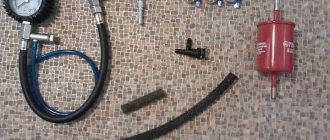A gas cylinder on a summer cottage or in a country house is a common occurrence, but extremely troublesome. After all, the supply of blue fuel in them will have to be periodically restored, observing the rules for refueling household gas cylinders at gas filling stations. And the cylinders themselves must meet special conditions.
You will learn all about the standards and requirements for filling tanks with liquefied gas from the article we presented. We will tell you which cylinders are suitable for refilling and further operation, where and how best to produce it. We will warn you about the problems that most often accompany this event.
What does the legislation say?
Gas stations, gas distribution stations and other gas supply facilities belong to the most complex operational category. The legislation provides for strict safety rules, in accordance with which all actions are carried out at the facilities and surrounding areas.
The storage and operation of a gas cylinder in the domestic sphere is explained by Decree of the Government of the Russian Federation dated December 26, 2016 No. 1498. It regulates the provision of public services and the operation of common property. One of the paragraphs describes the issues of purchasing, refilling and exchanging household gas cylinders.
Important basic points that are significant for all types of gas cylinders:
- the cylinder must be in good working order;
- have an unexpired shelf life;
- sales are carried out only in special licensed points;
- Refueling is carried out at “gas filling stations”.
It follows that at regular automobile gas stations, refueling is prohibited by the rules for the design and use of equipment operating under pressure. And this is not a whim of legislation, but a real act of caring for citizens.
It is best to contact reliable, specially equipped Gas Filling Stations (GNS), designed for refilling household cylinders
Operating rules
Using propane means following safety rules when using flammable substances. Please note that this gas is explosive if it comes into contact with air. Companies and professionals working with propane should keep in mind that:
- Cylinders must be refilled immediately after gas consumption. Cylinders cannot be stored empty for a long time;
- filled cylinders must be placed in pre-equipped gas cabinets;
- Containers can only be transported in a special trolley;
- cylinders must be placed vertically, the room or storage space must be protected from sunlight.
The danger of filling cylinders at gas stations without a license
The fact is that household and automobile cylinders differ in design: the latter have special cut-off valves that prevent the tank from overfilling.
The gas supply system turns off automatically when the norm is reached (not higher than 85%). But in cylinders intended for domestic use, such cut-offs are not provided. Another nuance - car systems are filled in liters, and household ones - in kilograms.
In licensed “gas filling stations” this issue is resolved simply - the cylinder is filled on a scale. Everything is done taking into account the amount of residue and newly supplied gas. The tank itself must be checked for leaks, service life, and the presence of heavy fraction residues.
Since 2022, household gas cylinders will no longer be refilled at regular car gas stations. On the one hand, it is clear that after several emergency situations with explosions, government agencies paid attention to this problem. However, on the other hand, they have not yet been able to solve it completely due to a lack of licensing points.
And if, when you go to a gas station, your tank is filled, you should know that both you and the gas station are breaking the law.
Let's consider what legal options we have for filling a gas cylinder, what the basic rules are according to which household gas cylinders are refilled at gas stations, as well as other important information on the operation of gas equipment with removable media.
Types of cylinders
Typically, steel and composite gas tanks have a service life of 20 years. To know it exactly, you need to ask the seller for the corresponding manufacturer’s certificate, where this period is written. Inspection is carried out every 5 years. Information about the cylinder is also indicated on it.
Gas cylinders of various sizes Source om1.ru
Types and features of gas storage cylinders
Manufacturers produce several types of steel cylinders of different volumes: 5, 15, 25 and 50 liters. Weight - from 4 to 22 kg. For example, a 50 liter cylinder weighs 44 kg. Recently, cylinders made of polymer composite materials in volumes of 14 or 33 liters have been developed and produced.
For rare seasonal use, you can purchase small models of 5-12 liters. For year-round and intensive use, choose 50-liter cylinders
Types of tanks for household use
Based on the material from which the body is made, cylinders for household use are divided into the following groups:
- Steel cylinders are strong and durable. Their vulnerable point is the welding seams, therefore, when purchasing and inspecting, great attention is paid to the inspection of welding seams. It is recommended to choose the right place to install the equipment, excluding places of high humidity, so as not to corrode steel models.
- Composite containers. This is a more modern option. A composite gas cylinder is also quite durable and costs 2-3 times more due to the high cost of materials containing fiberglass. Additional body protection enhances strength.
Polymer cylinders are easier to transport because they weigh less and are less subject to deformation when impacted or dropped. Another advantage of polymer equipment is high thermal stability. It may be near a fire.
Composite polypropylene Eurocylinders are safe, easy to recycle, convenient to use, but more expensive
How do color and purpose relate?
According to GOST rules, the color of the cylinder determines its purpose:
- white ones with yellow inscriptions are filled with acetylene;
- red - for propane;
- blue – for medical or regular oxygen;
- dark green ones store hydrogen;
- in gray with black elements - nitrous oxide.
For use in our domestic conditions and regular replenishment of liquefied fuel, only red tanks with appropriate markings are suitable.
Russian cylinder painting scheme - impossible to confuse! For domestic use of gas equipment, only red color options are suitable
Why do cylinders become covered with frost?
Here you can also debunk one of the most common misconceptions. It is generally accepted that if such a device “freezes,” it becomes covered with frost. Some even argue that such equipment should be insulated with blankets, old coats and other improvised items. So, the frost will disappear faster if you leave the gas container as is, without helping it “thaw” with warm things.
The bottom of a gas cylinder that is covered with frost
The appearance of frost can be explained by a number of physical processes that occur inside the structure when it is connected to stoves or burners. At such moments, active fuel consumption is observed, therefore, large volumes of gas liquid turn into a vapor fraction. And this phenomenon is always accompanied by high heat consumption, which is why the surface of the cylinder becomes much colder than the temperature in the surrounding space. Moisture in the air space begins to appear in the form of condensation on the walls of the installation, subsequently turning into frost. This is an absolutely natural phenomenon that you don’t need to do anything about.
Moreover, all attempts to use artificial “insulation” violate safety standards during operation, and also affect the deterioration of heat exchange between the device and the environment and affect the gas supply conditions. If your burner did not delight you with a grandiose flame, then after your “maneuvers” with the blanket, it may stop working altogether.
Do not insulate gas cylinders with anything!
In general, when connecting high-power gas devices, you need to be aware that the gas cylinder has limitations on the speed of release. This means that the liquid fuel turns into the vapor stage gradually. For example, a 50-liter cylinder can provide about 500 grams of gas in 60 minutes. This is equivalent to a power of 6-7 kW. In the cold season, this figure is halved if the equipment is located outside. In summer the situation is reversed: the maximum flow rate increases.
In any case, we can conclude that frost is evidence that the cylinder cannot cope with high fuel consumption. This may cause a temporary drop in gas pressure and equipment failure. If this happens, it is better to stop consumption and wait until there is a sufficient vapor cap.
Inspection of cylinders. How to find out service life
Household propane cylinders are metal sealed containers of a certain volume for storing gas. The material of manufacture is a steel alloy with additions of chromium and molybdenum. From the manufacturer they go into free circulation. They are used in specialized companies as equipment, in enterprises, and in households.
Each cylinder is accompanied by a paper passport from the manufacturer. The data is duplicated in the form of metal inscriptions on the back of the case, next to the company’s brand.
The technical condition of the cylinders must be strictly controlled in accordance with GOST 15860. To determine the possibility of further operation, an inspection procedure is carried out.
Subject to inspection once every five years:
- products manufactured before February 2014 can last up to 40 years;
- products manufactured after February 1, 2014 – up to 20 years.
The “metal passport” indicates the date of manufacture of the product, volume, weight, and date of last inspection. According to the rules of use, cylinders without metal passports or with unclear inscriptions cannot be refilled and cannot be exchanged.
Data on weight, production date, and date of last certification are printed on the nameplate body. It is important to treat the product with care so that the inscriptions are clearly readable, otherwise the cylinder will be taken out of service
And it is right. The “life” of each cylinder proceeds differently: some products are in constant use, others can gather dust in the garage for years in order to be used for specific purposes at the right time.
Do not forget that faulty equipment for storing hazardous substances (gas) can cause disaster.
What is propane used for?
It can be used for the following:
- cooking food;
- water heating;
- home heating;
- as a source of energy for lighting;
- the gas can be used to weld or cut metal.
Propane is usually used where there is no possibility of using a centralized gas supply.
Composite polypropylene cylinders Source sovet-ingenera.com
Why shouldn’t you fill up at regular gas stations?
The question of whether it is possible to refill household gas cylinders at a gas filling station is worth considering in more detail. According to the law, liquefied gas can only be sold in specially equipped points. But many gas stations are trying to make money by circumventing the law.
When purchasing gas at such a gas station, consumers should remember not only legal liability, but also the danger that an incorrectly filled cylinder poses.
Household cylinders can only be refilled at points where there is special equipment and a license. Compliance with the rules indicated in the poster is a mandatory condition that guarantees safety
And the risks are great if:
- the container is not checked for leaks;
- inspection control, and therefore serviceability, is not carried out;
- but the most important thing is that at car gas stations there is no way to check the filling capacity required by the approved standards (85% of the volume).
The free zone creates a “vapor cap” that prevents gas expansion. For example, when heated under the sun. How much liquid substance is needed can be easily calculated by dividing the nominal volume by 1.43. For example, for a cylinder designed for 22 liters, it is enough to add 15.38 liters of liquefied gas.
If there is no cut-off valve, the work is carried out literally “by eye”, so there is a high possibility of overfilling the container, which means increasing the possibility of a catastrophic risk.
Therefore, before filling an empty gas cylinder at a gas station, make sure that the station has special equipment for this, including weighing scales. But it is better to fill containers at special gas filling stations to ensure weight control.
Before refueling, the cylinder is weighed so as not to exceed the permissible weight parameters after refueling.
Reviews from our clients
My brother and I inherited a house from our grandmother. The only catch is that it is WITHOUT GAS!!! This is certainly something! If it weren't for the gas cylinders, I don't even know how anyone could be in it. We have already refueled 2 times at Interoil. But I’m not sure that we will continue in the same spirit, since I want to sell it as soon as possible.
I always take propane cylinders with me when hiking in the mountains, in particular in Crimea. They always come in handy both when you are camping on the seashore and when you stop for the night on a plateau. When I return from a trip, I try to refuel with professionals. Interoil is my benchmark for quality in this sense. Prices are normal for tourists, gas is also good. Never had any problems with refueling.
Steel cylinders with liquefied propane have been an integral attribute of the kitchen in our country house for many years. When the contents are almost used up, we call INTEROIL and order a refill. Personally, I like that the company’s staff never ignores calls, always accepts applications quickly and fills even the smallest amount. In a word, a cool office with a professional approach.
I cooperate with the Interoil company within the framework of business. My workshop is located on the outskirts, there are no special communications. But often you have to weld metal. It’s mainly for this that I keep steel propane cylinders. As the cylinders are emptied, I call Interoil managers and they come and fill them up. Nothing complicated, very convenient.
Gas filling station services
These are companies that fill gas into any permitted containers. The gas filling station must be equipped with special equipment that determines the gas filling method.
There are three ways to fill with gas:
- pumping;
- pump-compression;
- pump-evaporation.
The name of the equipment speaks for itself. These are pumps, compressors to create increased pressure, an evaporator, a heater to provide increased pressure. The following must also be present: hoods, gas storage tanks, technical equipment (density meters, dispensers).
A mobile modular station is a version of a small gas distribution station for refilling oxygen cylinders, most often used for medical institutions or construction enterprises that use oxygen when carrying out welding work.
Gas filling stations offer cylinder replacement services, provide safety training, as well as inspection and fitness testing
Large stations use cylinder filling stations with electronic weighing units, including an industrial controller and a gas supply valve. When installing the cylinder on the cargo receiving platform of the scale, the amount of residues and the weight of the new arrival are automatically recorded.
When the required volume, set in advance on the electronic unit, is reached, the gas supply automatically stops.
Refilling lighters
Reusable lighters have become more popular than disposable ones, as they are much cheaper for their owners. Buying a gas cylinder for home is often associated with the need to charge lighters. How to do it yourself:
- Make sure there is no gas left in the lighter.
- Set the gas supply valve to minimum and move it away.
- Carefully remove the heat to burn off any remaining oxygen.
- Connect the lighter to a container of triple purified butane. Only such gas will ensure a long service life for the lighter.
- While the lighter is filling with new substance, you will hear a characteristic hissing sound.
- When the lighter is full (you will feel it immediately), disconnect it and close the valve.
A can for refilling gas lighters will last for several months with active use, and with moderate use it will last more than a year.
Rules for refilling cylinders
There are safety requirements for refilling a standard cylinder. Mandatory marking “compressed gas” and a special sticker indicate an explosion hazard.
The equipment must be checked according to the following parameters:
- serviceability;
- presence of residual pressure;
- valve or valve defects;
- presence of rust on the surface, peeling of material;
- dents or damage.
Before refueling, condensate and remaining gas are removed from the cylinder and it is checked for serviceability. At specialized stations, equipment is used - a gas supply hose with valves, an adapter - an adapter.
What you need to know about gas cylinders
The appearance of a gas cylinder is familiar to everyone - steel, or less commonly, polymer cylinders in which gases and gas mixtures are stored under high pressure. Some gases are compressed at normal temperatures, while others become liquid. That is, substances such as ammonia, chlorine, hydrogen, nitrogen, helium or fluorine are stored in vessels as liquid.
Most often, cylinders are made of steel, less often - of fiberglass. The price of the second option is 2-3 times higher, so it is not so popular. The cylinders differ not only in the material they are made of, but also in their capacity - from 5 to 50 liters. To understand how much a cylinder can hold, you need to divide its nominal volume by 1.43. That is, approximately 85% of empty containers. So, 15.38 liters of substance can be pumped into a 22-liter container.
Gas cylinders are widely used in industry and at home
For many, it turns out to be surprising, but the color of the vessel also matters and indicates the gas contained inside:
- red ones are filled with methane, propane or other flammable gases;
- white with yellow - acetylene;
- blue for oxygen;
- green for hydrogen;
- protective against chlorine or phosgene;
- black for compressed air and carbon dioxide.
What is better: exchange or refill?
There are two ways to obtain a cylinder of gas necessary for the operation of a gas boiler, stove, outdoor lighting lines, etc.: fill your container or exchange it for another that has already been filled. In the first case, the cylinders are left at the station for 1-2 days, the consumer receives his full container.
In the second - a quick exchange of an empty container for a filled one. Consumers can make their own choice about which method to use. The second method is faster, but you get someone else's equipment, which may not be the newest. The cost depends on the type and volume of gases. Standard case: 200-300 rubles.
What problems can occur when refueling?
Nuances that are important to know about filling gas cylinders:
- Some Chinese cylinders have thin walls. They are not designed for heavy loads. It must be remembered that cheap equipment may not pay off due to high risk.
- Active gases are prone to fire and explosions, so you need to especially carefully monitor the volume (85%) when filling with propane, oxygen, methane.
- To use household gas at low temperatures, it is better to use winter propane-butane mixtures, with the advantage of propane, since butane is of little use for winter use.
In order to prevent the occurrence of the listed problems and risks associated with replenishing the supply of liquefied explosive substances, it is necessary to think through the process in advance and provide for all the nuances.
A high-quality cylinder and compliance with operating rules are the key to safety. This characteristic should be treated with special attention.
Replacement of the cylinder with a new one, repair
Sooner or later the cylinder wears out, the valve may fail, and the surface will begin to delaminate. Almost every city has a cylinder replacement or repair point. You can give away the old one and get a new product, with an additional payment of approximately 1,500 rubles. This is a good alternative to buying new equipment.
If the valve is repairable, it is repaired or completely replaced. The cylinder itself can be sanded and painted. The cost of a new empty propane cylinder: from 2,500 to 600 rubles, depending on the manufacturer’s materials.
It is more profitable to purchase large cylinders - a 50-liter container is enough to cook food on the stove for a small family for 2 months
How much gas is enough?
Here you can use primitive mathematical rules. If we take into account the power of a kitchen stove, where 4 burners work at once, then 8 kWh of energy is used in 60 minutes. If you burn 1 kg of gas, you can get 12.8 kWh of energy. The first result must be divided by the second digit, resulting in the amount of “liquid” fuel required for full operation of the kitchen stove for an hour. This figure is 0.625 kilograms of gas. Therefore, a 50 liter container with 21 kilograms of gas will be used to operate the cooker for 33.6 hours. If the passport of your equipment indicates the power in kg of fuel burned, then the calculations are greatly simplified.
In the future, everything greatly depends on the intensity of use of the stove. If you often cook jellied meat, then the level of consumption will be one, if you are content with only brewing morning coffee, then another. Based on practical experience, we can say that 12 liters of gas, which will be used by a small family on weekends at the dacha, will be enough for the whole summer. You will find more detailed information about autonomous gasification in this section.
Replacement procedure, safety during transportation
The design of the cylinders differs in the presence of a closing valve KB-2 or a technical valve VB-2 in accordance with GOST 21804–94. In versions with a valve, there is a quick-release reducer that reduces the pressure when a flame appears.
The reducer is attached to the main hose through a fitting with a small mounting clamp:
- The reducer is attached to the cylinder with the valve by pulling it onto the neck of the valve with an o-ring.
- It is connected to the valve by means of a thread on the valve fitting, in another case - by a union nut of the gearbox. At replacement points, a special disposable gasket is provided.
If the gas pressure has noticeably decreased and is going to zero, you should not squeeze it to the last drop:
- Turn off the gas, close the valve and begin replacing the cylinder.
- Remember that the gearbox has a left-hand thread. Unscrew the gearbox nut clockwise.
- Replace the cylinder.
- Prepare a paronite gasket for replacement. The nut must be tightened counterclockwise. The cylinder must stand strictly vertically (never turn it over).
- Be sure to close the tap of the old cylinder, install a plug and a protective cap. This is important because some amount of gas always remains in the cylinder.
Always close the valve when the stove is not working.
Transportation of cylinders is carried out only with safety caps and plugs. When transporting, make sure that the valve is closed and protected by a cap.
Purchase of a cylinder and necessary components
Propane storage tanks have an almost unlimited service life. The main condition is compliance with all operating standards, as well as storage and transportation conditions. You can save a little and buy a used propane tank, but you need to approach the purchase with the utmost caution.
First you need to make a visual inspection of the case. You can safely refuse the offer if traces of poor-quality welding and serious dents are visible on it. Appearance can tell a lot about the conditions in which he has been. Suspicion can be caused by traces of fresh paint, or, conversely, by too old, cracked coating.
You should not risk buying a used container if there is even the slightest suspicion of rust. This indicates that the container was stored incorrectly in conditions of high humidity. Even a small spot of rust will sooner or later increase in size, which will inevitably lead to gas leakage, and in the worst case, to an explosion.
The inlet valve and valve should be in order. If they are damaged or show signs of repair, they will require replacement in the future, and therefore additional costs.
The points described above must also be taken into account when purchasing a new cylinder, since no one can guarantee that the correct conditions were observed during storage in the warehouse.
In addition to the cylinder for household use, you will need the following items:
- a set of adapters for connecting to a stove, burner or heating system;
- reducer for propane tank;
- special gas hose with fittings;
- tools for isolating connections.
To ensure maximum safety during installation, it is necessary to use keys and other tools coated with brass or copper. Such tools do not create a spark when they come into contact with metal.
Several important nuances for operation
Simple rules will help you use cylinders conveniently and safely in dachas and country houses:
- Do not smoke when changing the cylinder. It is forbidden to keep an open flame nearby and check for leaks using fire (a lighter or matches).
- Keep the valve fully open and fully closed when appliances are turned off.
- Do not allow the power tool to operate in close proximity to the cylinder so that sparks from the conductive rotor brushes do not flare up due to an unnoticed gas leak.
Compliance with the requirements for competent and careful operation of liquefied gas tanks is a norm that guarantees the safety of the user and others, as well as the safety of property.
The following article will introduce you to the nuances and rules for filling gas cartridges required for the operation of burners. We recommend reading this very useful information.
Conclusions and useful video on the topic
Refilling a fifty-liter cylinder. Specialized gas stations have the necessary equipment. Cylinders must be checked for integrity and the valve inspected. Refilling time is approximately 5-10 minutes. Safety precautions are observed:
Operate gas equipment carefully. Try to protect the housing from impacts to prevent gas leakage:
After replacing the cylinder, inspect and evaluate the tightness of the connections, make sure there are no gas leaks. You can coat the connections with foam from the soap solution and observe:
A gas stove is the best option for domestic use when there is no centralized gas pipeline. Knowing how to properly fill a gas cylinder at a gas station with the necessary equipment, following safety precautions during transportation and operation, you can make life comfortable and convenient.
Could you share your experience gained from filling a household cylinder with the most affordable type of fuel? Do you have useful information on the topic of the article that is worth sharing with site visitors? Please leave comments in the block below, ask questions, post photos.
What you need to know about household cylinders and how to refill them
Published: 03/19/2018, 11:11
Good afternoon, dear visitors of our website. Many residents of our country are familiar with the situation when, in order to heat their area, they have to resort to independent installation of gas equipment.
This article will tell you about the main nuances of using gas cylinders in everyday life and will be useful to those who have not yet encountered the purchase of them. We will also find out whether it makes sense to buy a new container and what you need to pay attention to when buying a used cylinder.
Among other things, in the article you can learn about the most important thing - how gas cylinders are filled with propane. Let's not waste time and start studying this issue.
